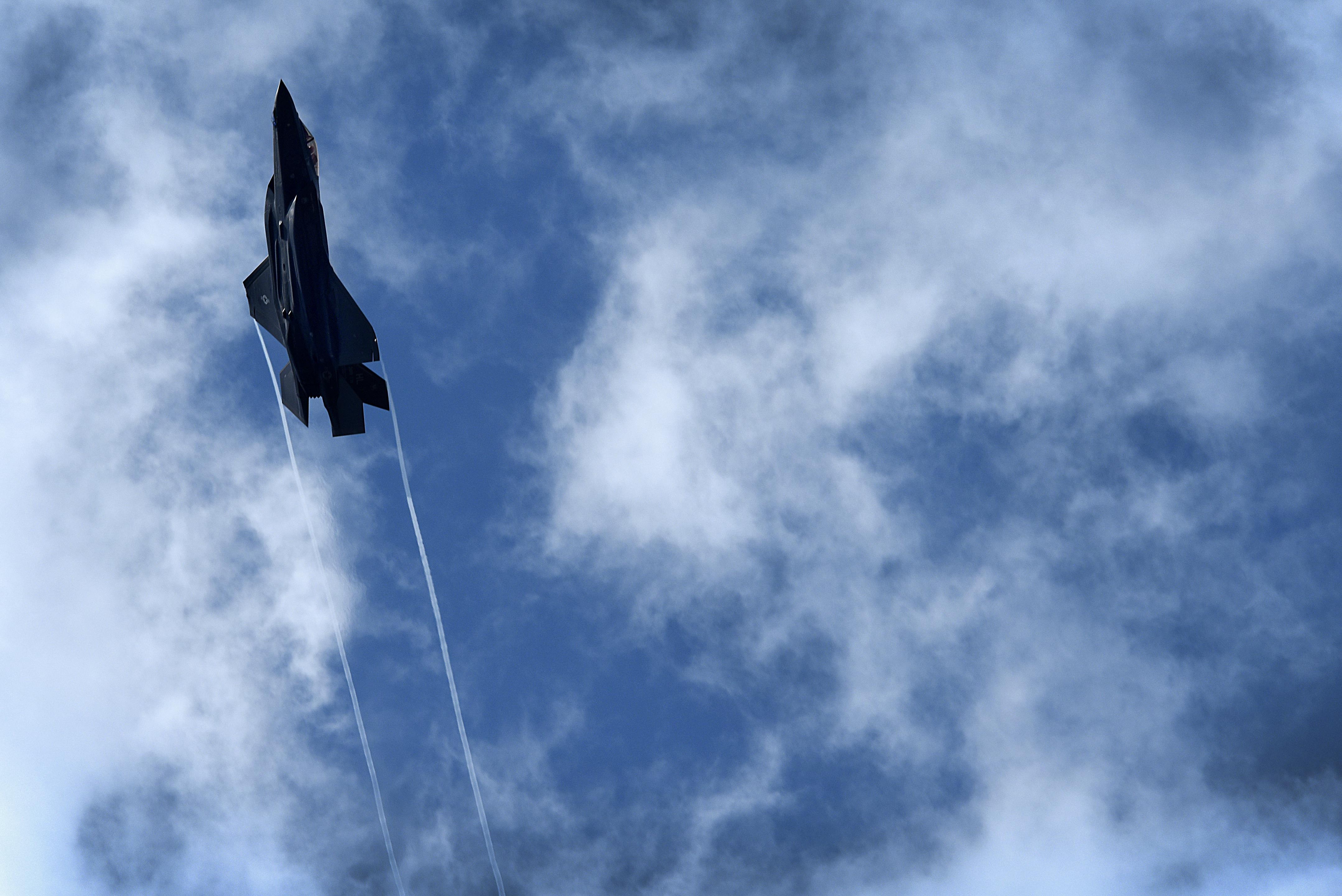An F-35 from the 34th Fighter Squadron at Hill AFB, Utah, flies at RAF Lakenheath, England, on April 15. Air Force photo by A1C Elijah Chevalier
The movement of eight F-35As to Lakenheath, England—the first overseas deployment of the Air Force’s newest fighter—isn’t meant? to send any kind of political message, and the aircraft won’t be available for operational missions during their weeks-long stay in the UK, USAF officers reported during a telephone press conference on April 19.
The deployment, which was made over the weekend with little notice, had nevertheless been in the planning for months, US Air Forces Europe and Air Force Africa spokeswoman Capt. Sybil Taunton said. Former head of Air Combat Command Gen. Herbert “Hawk” Carlisle said in February that a European F-35 deployment was coming “soon.” Taunton acknowledged that “some” of the funding for the deployment is coming from European Reassurance Initiative accounts, the rest is coming from USAF operations and maintenance monies. The timing of the deployment “is not tied to any world events,” she said.
Lt. Col. George Watkins, commander of the 34th Fighter Squadron aircraft from Hill AFB, Utah which made the trip, said the jets are not there to perform Baltic Air Policing or any other operational missions—even in a contingency—but are taking “the next step … in the natural progression” of F-35 deployments. Watkins said the jets have previously deployed to Mountain Home AFB, Idaho, to a Red Flag exercise at Nellis AFB, Nev. and to “the other side of the base” at Hill on a simulated deployment to practice moving equipment and setting up at a new location. This UK deployment now adds the experience of transiting the ocean and setting up with “a different power system” in a host country, he said.
During the deployment, the F-35s will first spend a week or so tangling with F-15Cs and Es from Lakenheath, which will be the first overseas F-35A base in a few years. They will practice both air-to-air and air-to-ground missions, 1v1 and 2v2 scenarios and “fighting our way in…and out” of simulated target areas, but will use no actual ordnance, live or inert. Further on, the F-35s will practice against British Typhoons, and possibly Dutch F-16s, though the latter engagement isn’t certain yet. Later still, the jets will make “out and back” visits to other, unnamed NATO countries, but will not participate in exercises or do training during these flights. Watkins said broadly the other-nation visits are for “familiarization” purposes, and no austere fields will be part of the program.
Six F-35As initially made the trip; one additional F-35A aborted at Hill as a precautionary measure for a suspect fuel tank reading, but it and another jet followed the rest of the group Wednesday. Watkins said the unit brought 245 people on C-17 and C-5 cargo aircraft; a larger-than-usual number of the airmen were “security forces,” he said.
The size of the deployment was “very comparable” to what is done with F-16 movements, Watkins noted, but it was not modeled on the “Rapid Raptor” concept which quickly deploys a small number of aircraft with a single C-17 or KC-10 carrying support gear and people.
Each group of three F-35s was accompanied by three tankers along the way, and nine air refuelings were made on each aircraft. KC-135 tankers from RAF Mildenhall escorted the first group of jets from over Canada the rest of the way to Lakenheath. He said the Autonomic Logistics Information System (ALIS) came ahead of the group, was set up “in record time” and is functioning well in the new location. “We’re happy with how it’s working,” Watkins asserted.
He also said the F-35’s low observable surfaces will be maintained at combat levels during the deployment.
The exact duration of the planned deployment was not disclosed.
